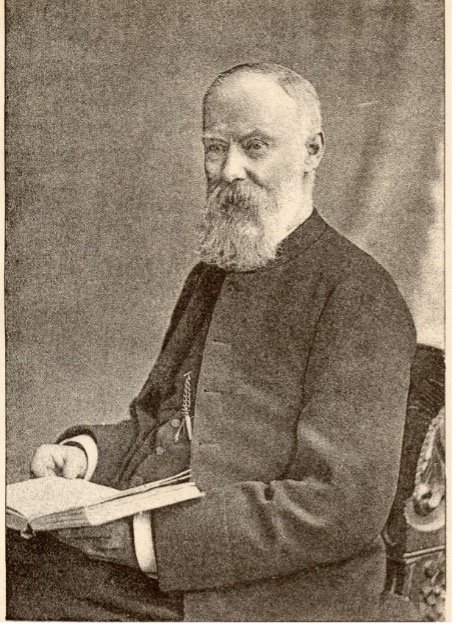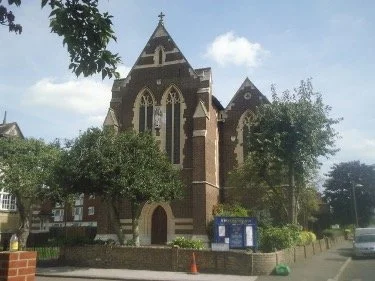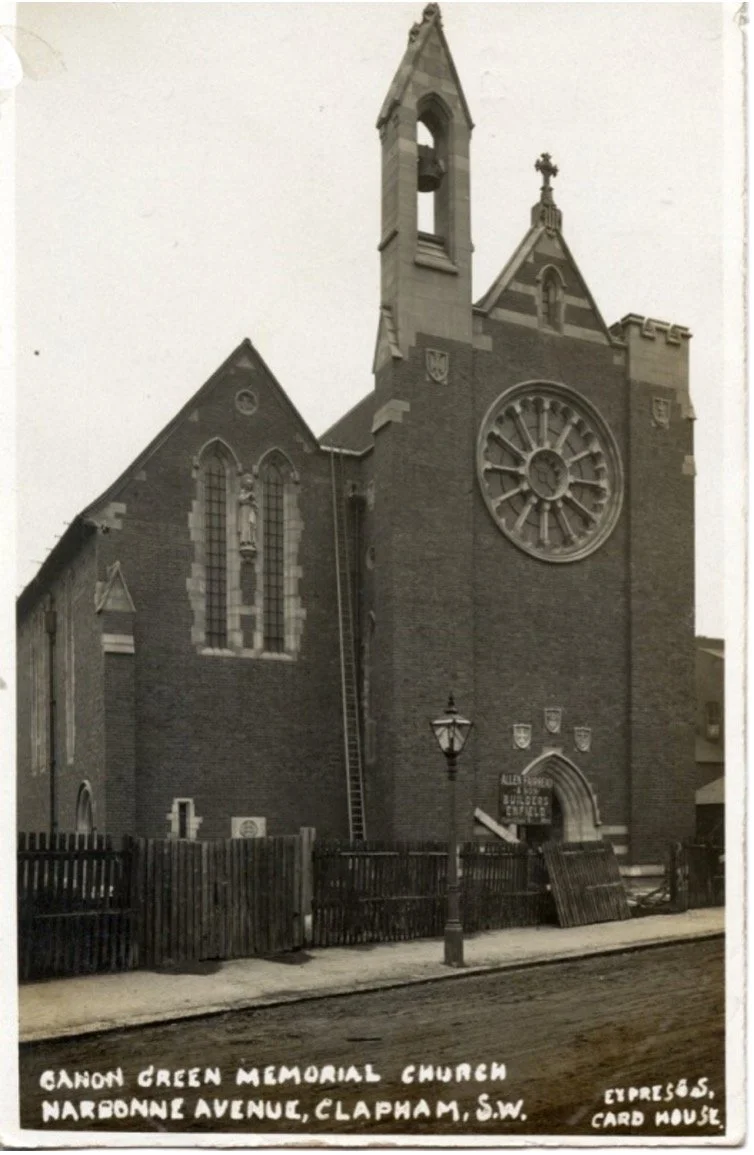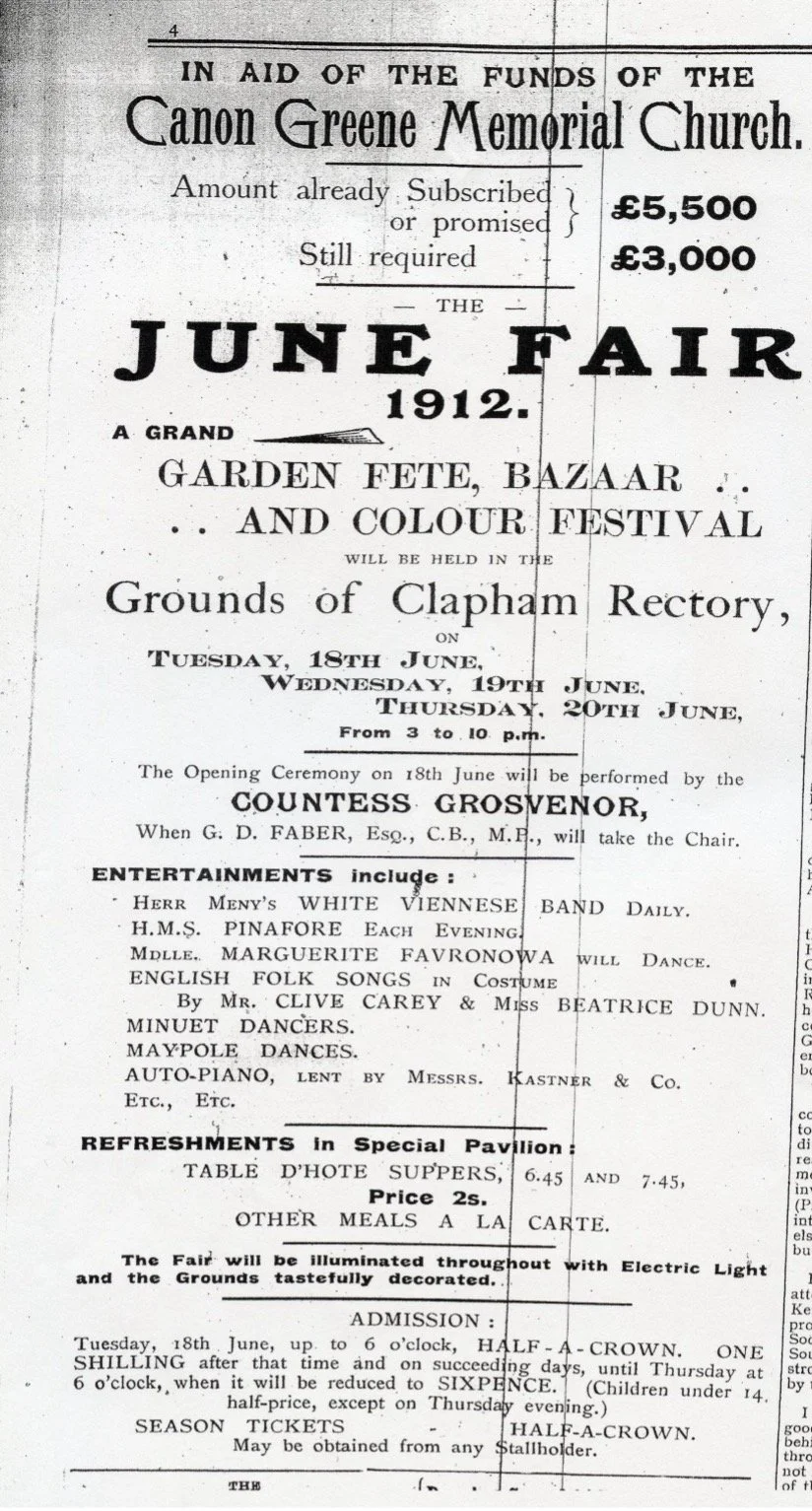A vision made real
The Church of the Holy Spirit was originally known as the Canon Greene Memorial Church and owes its existence to one very bold and visionary man, Canon Charles Philip Greene, who was the Rector of Holy Trinity Church which stands on the north side of Clapham Common. Canon Greene was born in Ireland in 1840 but emigrated to Australia at an early age. Having graduated from the University of Sydney, he took Holy Orders and ministered in Australia until he was invited to become Vicar of Coggeshall in Essex. He became Rector of Clapham in 1885 but continued to take a close interest in Australia and to welcome people from all over the then British Empire to the Rectory.
At the end of the nineteenth century, as the grand old houses that had stood along the south side of Clapham Common were being demolished and replaced by the terraced houses we know today, Canon Greene saw the need for a new church to serve the many new people who were coming to live along the Southside of the Common as the population rose from a few hundred to around 7,000.
Photo of children standing on the bridge in the grounds of Eagle House. The bridge stood where the Church of the Holy Spirit now stands.
When taking a walk in the 1890s Canon Greene saw a field behind Abbeville Road which had been part of the Eagle House estate. Eagle House was a large mansion which had been built in 1773. It had been the home of William Smith, the MP for Sudbury, who was a friend of William Wilberforce and the grandfather of Florence Nightingale, and was later the home of William Edgar of Swan & Edgar, the famous former department store at the bottom of Regent Street. Eagle House was demolished after 1889 and now only the billiard room survives at the end of Narbonne Avenue.
Canon Greene bought this land with his own money, but he did not have sufficient funds for the actual building of the church. The idea of building a new church also faced opposition from many in the congregation at Holy Trinity who also needed at that time to raise funds for the completion of St Anne’s Hall in Venn Street; the rebuilding of the East end of their own church to include a chancel to accommodate an organ and choir and a Lady Chapel; the reconstruction of the parish schools; and a new organ.
So Canon Greene died in 1908 without seeing the new church built and he left directions in his will that if his gift were accepted by the Ecclesiastical Commissioners, it was nevertheless to be sold by his residuary legatees after ten years unless by then there had been built “a permanent church, or a substantial portion thereof sufficient for the performance of divine service or a mission room or Sunday school.”
His successor, Prebendary Dalton, held a meeting of his congregation to discuss how to commemorate Canon Greene’s 22 years of ministry. There were three proposals: a recumbent effigy of Canon Greene; a tower with a peal of bells; and the new church. Prebendary Dalton then established a Fund which was firstly for memorial tablets in Holy Trinity and St Saviour’s (a church in Cedars Road which was destroyed in World War II) and secondly for a new church. Donors were allowed to restrict their donations to one or the other . Contrary to all expectations, within two weeks of the issue of the Appeal, £1,700 had been raised or promised. Canon Greene had already sold a strip of the land which he had bought, which was being used as a rubbish dump by the Abbeville Road traders, in order that the houses in Klea Avenue could be built.
Canon Greene had been a very popular Rector and in the booklet launching the Fund one of his parishioners paid him the following tribute:
“I hope to live to see this church consecrated, and served by a priest of God, as pure and saintly in his life, as firm and steadfast in his faith, and as gentle and tolerant to his fellow-men, as was Charles Philip Greene”
The architect whose design was chosen for the church was Henry Philip Burke Downing, a Scottish architect who was also the Diocesan Architect of Chichester, consulting architect to the Incorporated Church Building Society and the London Diocesan Fund, and a Fellow of the Society of Antiquaries and of the Royal Institution of Chartered Surveyors. He was a prolific architect and wrote a number of books and articles about church architecture and archaeology. Many of his churches are still in use today, not least our sister church of St Barnabas in Gorringe Park Avenue in Mitcham which looks very similar to our own church.
St Barnabas, Mitcham
The project faced a further challenge, however, when it was discovered that deeper foundations would be necessary at a cost of £2,000 because of excessive water in the ground, there having been a pond on the site part of which now lies under the modern vestries and which explains why we sometimes get water in the boiler room.
When the work began on the church its Dedication had not been decided. The obvious choice seemed to be St Philip’s, one of Canon Greene’s names but at that time there was already a church of that name nearby, which is now the Ethiopian Orthodox church in St Philip Street, Battersea. Finally, Prebendary Dalton suggested that it should be called the Church of the Holy Spirit, as he felt that, although the title was unusual in England – the most famous Church of the Holy Spirit being in Heidelberg in Germany – it was also distinctive and to those who had borne the burden of getting the church built, the dedication seemed appropriate.
On 27th April 1912, when the walls were 12 feet high, the foundation stone was laid by Miss Alice Prowte Ellis, a former Clapham resident who had very generously donated £1,000 to the Appeal Fund. After a service at the Parish Church led by the Bishop of Kingston and supported by the choirs of Holy Trinity, St Peter’s and St Saviour’s and which concluded with the singing of “Christ is our corner-stone”, the congregation processed to the new church singing hymns. At the site the procession sang the Litany of the Holy Ghost and the stone-laying ceremony was accompanied by the singing of “Christ is made the sure foundation.” In his address the Bishop compared Canon Greene to King David who had prepared for the erection of the Great Temple in Jerusalem but had not lived to see it completed. The builders of the church were Messrs. Allen, Fairhead and Sons of Ealing.
The budgeted cost of building the new church was around £8,500 of which around £5,500 had been raised. Then between 18th and 20th June 1912 a three day “Garden Fete, Bazaar and Colour Festival” was held in the grounds of Clapham Rectory which was described by the Clapham Observer as “a brilliant spectacle and a crowning success” and raised the amazing sum for that time of £1,500.
The church was consecrated on 24th January 1913, the fifth anniversary of Canon Greene’s death. A great procession came from Holy Trinity Church, through Rookery Road, which was then a muddy lane, and down Narbonne Avenue singing the Litany of the Holy Ghost and, as they entered the church, the hymn “Come Thou Holy Spirit, Come”. By that time the church was almost free of debt but it was suggested that a gold collection should be taken at the Consecration Service (gold sovereigns then being the equivalent of £1) and £110 was received in gold and £25 in silver. This cleared the full amount that had been required for the building of the church which by that time had risen to £9,000. The church was consecrated on 24th January 1913, the fifth anniversary of Canon Greene’s death. A great procession came from Holy Trinity Church, through Rookery Road, which was then a muddy lane, and down Narbonne Avenue singing the Litany of the Holy Ghost and, as they entered the church, the hymn “Come Thou Holy Spirit, Come”. By that time the church was almost free of debt but it was suggested that a gold collection should be taken at the Consecration Service (gold sovereigns then being the equivalent of £1) and £110 was received in gold and £25 in silver. This cleared the full amount that had been required for the building of the church which by that time had risen to £9,000.
There had been many gloomy prophesies that the new church would have no congregation but Canon Dunn had been working as Priest-in Charge in the area for the previous year and was instituted as the first Vicar of the Parish on 3rd October 1913.
Canon Dunn
Under Canon Dunn’s leadership, the church had a very large and active congregation and soon had many organisations including branches of the Church of England Men’s Society, the Mothers’ Union and the Scouts.
The development of the church was interrupted by the beginning of the First World War in August 1914 but many of its furnishings were subsequently given in memory of those who died. In 1963, E W Wykes, who had been the organist at that time, wrote a moving recollection of the end of the war:
“The most wonderful service at which I took part was on the coming of Armistice Day – 11th November 1918. I called on Mr Dunn on my way home from town in the late afternoon and we arranged to have a service of thanksgiving at 7.45pm. The church bell which had been silenced during the war was rung at full speed and by the time the service began the church was packed to its utmost limit. We had a most glorious service of thanksgiving for a great deliverance and I well remember that we concluded with a hymn which I think was “Praise my Soul the King of Heaven” followed by the Te Deum. Even with only an American organ I could always hold the choir and congregation but when we came to the last hymn, Te Deum and National Anthem the congregation took charge and sang as I have never heard before or since at any church. They did not require an organ or an organist.”
